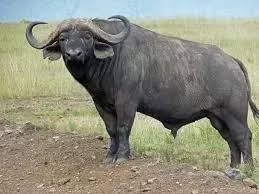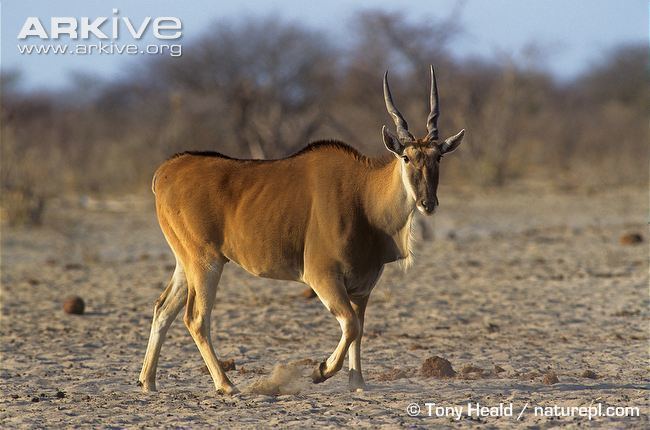Post by dinosauria101 on Jun 27, 2019 9:06:13 GMT 5
African (Cape) Buffalo - Syncerus caffer
The African buffalo, affalo, nyati, Mbogo or Cape buffalo (Syncerus caffer) is a large African bovine. It is not closely related to the slightly larger wild Asian water buffalo, but its ancestry remains unclear. Owing to its unpredictable nature which makes it highly dangerous to humans, it has not been domesticated, unlike its Asian counterpart, the domestic Asian water buffalo. The Cape buffalo is a very robust species. Its shoulder height can range from 1 to 1.7 m (3.3 to 5.6 ft) and its head-and-body length can range from 1.7 to 3.4 m (5.6 to 11 ft). The tail can range from 70 to 110 cm (28 to 43 in) long. Savannah type buffaloes weigh 500 to 910 kg (1,100 to 2,000 lb), with males, normally larger than females, averaging 768 kg (1703 lbs). A record-sized savannah-type male weighed 1,000 kg (2,200 lb). Forest type buffaloes, at 250 to 455 kg (550 to 1,000 lb), are only half that size. Its head is carried low, its top located below the backline. The front hooves of the buffalo are wider than the rear, which is associated with the need to support the weight of the front part of the body, which is more powerful than the back.

Common Eland - Taurotragus oryx
The common eland (Taurotragus oryx) (Swahili: Mbunga) also known as the southern eland or eland antelope, is a savannah and plains antelope found in East and Southern Africa. It is native to Botswana, Burundi, Congo, Ethiopia, Kenya, Lesotho, Malawi, Mozambique, Namibia, Rwanda, South Africa, South Sudan, Swaziland, Tanzania, Uganda, Zambia and Zimbabwe; and is possibly extinct in Angola. The elands are spiral-horned antelopes belonging to the Bovid tribe of Tragelaphini. An adult male is around 1.6 metres (5 ft) tall at the shoulder (females are 20 centimetres (7.9 in) shorter) and weighs an average of 500–600 kilograms (1,100–1,300 lb, 340–445 kilograms (750–980 lb) for females). It is the second largest antelope in Africa, slightly smaller than the Giant Eland.

Credit to Wikipedia
The African buffalo, affalo, nyati, Mbogo or Cape buffalo (Syncerus caffer) is a large African bovine. It is not closely related to the slightly larger wild Asian water buffalo, but its ancestry remains unclear. Owing to its unpredictable nature which makes it highly dangerous to humans, it has not been domesticated, unlike its Asian counterpart, the domestic Asian water buffalo. The Cape buffalo is a very robust species. Its shoulder height can range from 1 to 1.7 m (3.3 to 5.6 ft) and its head-and-body length can range from 1.7 to 3.4 m (5.6 to 11 ft). The tail can range from 70 to 110 cm (28 to 43 in) long. Savannah type buffaloes weigh 500 to 910 kg (1,100 to 2,000 lb), with males, normally larger than females, averaging 768 kg (1703 lbs). A record-sized savannah-type male weighed 1,000 kg (2,200 lb). Forest type buffaloes, at 250 to 455 kg (550 to 1,000 lb), are only half that size. Its head is carried low, its top located below the backline. The front hooves of the buffalo are wider than the rear, which is associated with the need to support the weight of the front part of the body, which is more powerful than the back.
Common Eland - Taurotragus oryx
The common eland (Taurotragus oryx) (Swahili: Mbunga) also known as the southern eland or eland antelope, is a savannah and plains antelope found in East and Southern Africa. It is native to Botswana, Burundi, Congo, Ethiopia, Kenya, Lesotho, Malawi, Mozambique, Namibia, Rwanda, South Africa, South Sudan, Swaziland, Tanzania, Uganda, Zambia and Zimbabwe; and is possibly extinct in Angola. The elands are spiral-horned antelopes belonging to the Bovid tribe of Tragelaphini. An adult male is around 1.6 metres (5 ft) tall at the shoulder (females are 20 centimetres (7.9 in) shorter) and weighs an average of 500–600 kilograms (1,100–1,300 lb, 340–445 kilograms (750–980 lb) for females). It is the second largest antelope in Africa, slightly smaller than the Giant Eland.

Credit to Wikipedia






